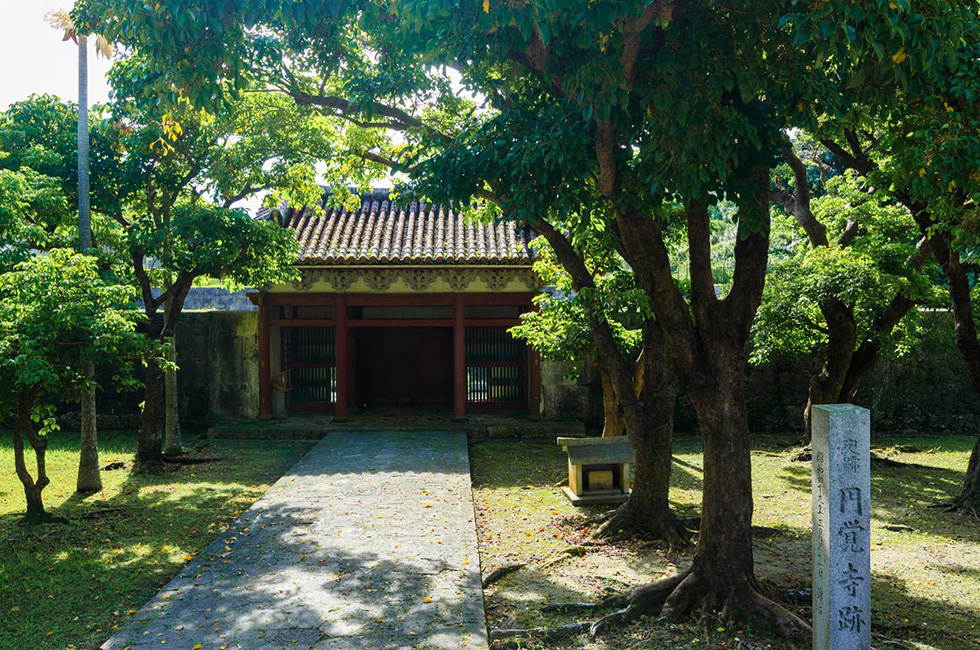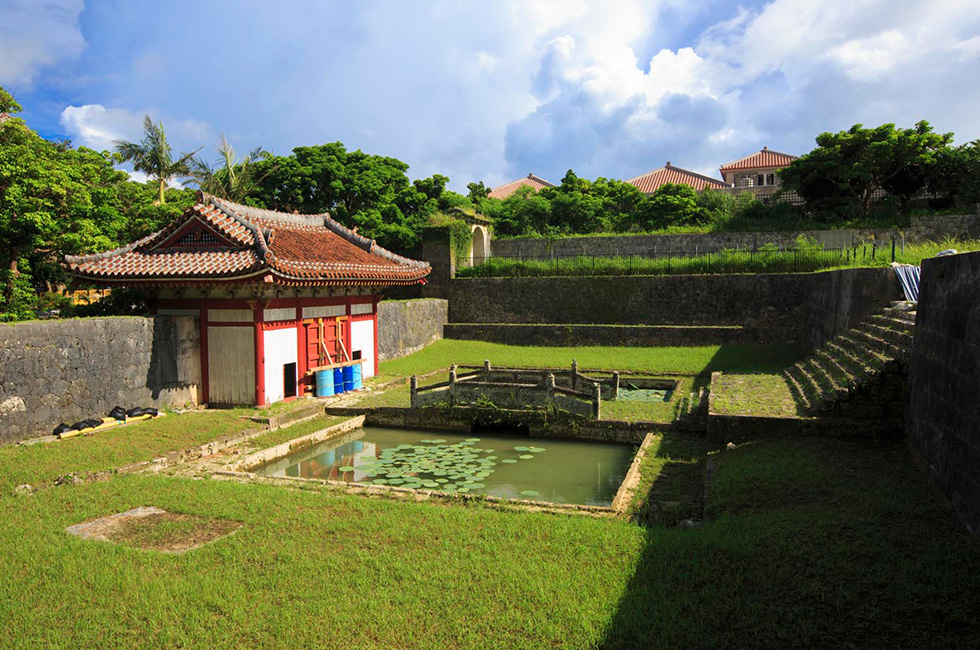Enkakuji Temple
Home > Visitor’s Guide > Ryukyu Kingdom exploration ~American writer's gaze~ > Enkakuji Temple
Enkakuji Temple


Enkakuji was a Buddhist temple located just outside the northern walls of Shuri Castle, sometimes referred to as Tentokuzan. Founded by King Sho Shin in 1492 as the family temple of the Second Sho Dynasty, it was the head temple of the Rinzai Zen Buddhist sect in the kingdom. As the first major Buddhist temple erected in Ryukyu, Enkakuji was an important symbol of the region’s cultural connection with Japan, China, and Korea. It was also strong evidence of the Ryukyuan kings’ adoption of East Asian standards of civilization. After suffering periodic fires and making extensive restorations over the centuries, the temple was destroyed during the Battle of Okinawa in 1945. The current Somon outer gate, a reconstruction completed in 1968, is the sole existing wooden structure.
Site and Layout
The compact site of Enkakuji is steeply terraced and enclosed by high stone walls. It faces west towards Enkanchi Pond and the Bezaitendo hall, forming a unique architectural ensemble. The overall layout was inspired by, and named after, Engakuji Temple in Kamakura, built 200 years earlier. Seven main buildings were sited along a clear central axis, an arrangement common to Zen Buddhist temples known as shichido garan, or “seven hall compound.” The Somon outer gate, which originally housed a flanking pair of Nio guardian statues, leads to a stone-walled courtyard with a rectangular lotus pond called Hoshoike in the center. This is spanned by a delicately carved Chinese-style stone bridge called Hoshokyo, possibly brought from China as a gift. From there the path leads to a steep stone staircase that climbs to the location of what was the large, two-storied Sanmon Gate, with the temple’s central building—the two-storied Buddha Hall—occupying the courtyard beyond. Other important structures included a Great Hall, a bell tower, and a lecture hall.
International Influences
Enkakuji beautifully blended Japanese, Chinese, and possibly Korean influences with local Ryukyuan materials and design sensibility. The complex wooden bracketing that supported the eaves is typical of Zen architecture, but overall, the structures were more massive and rugged than the Japanese Zen temples from which they were derived. The stone-walled first courtyard feels as if it is sunken into the earth, and is reminiscent of the nearby Tamaudun Royal Mausoleum.
© Shurijo Castle Park All Rights Reserved.


